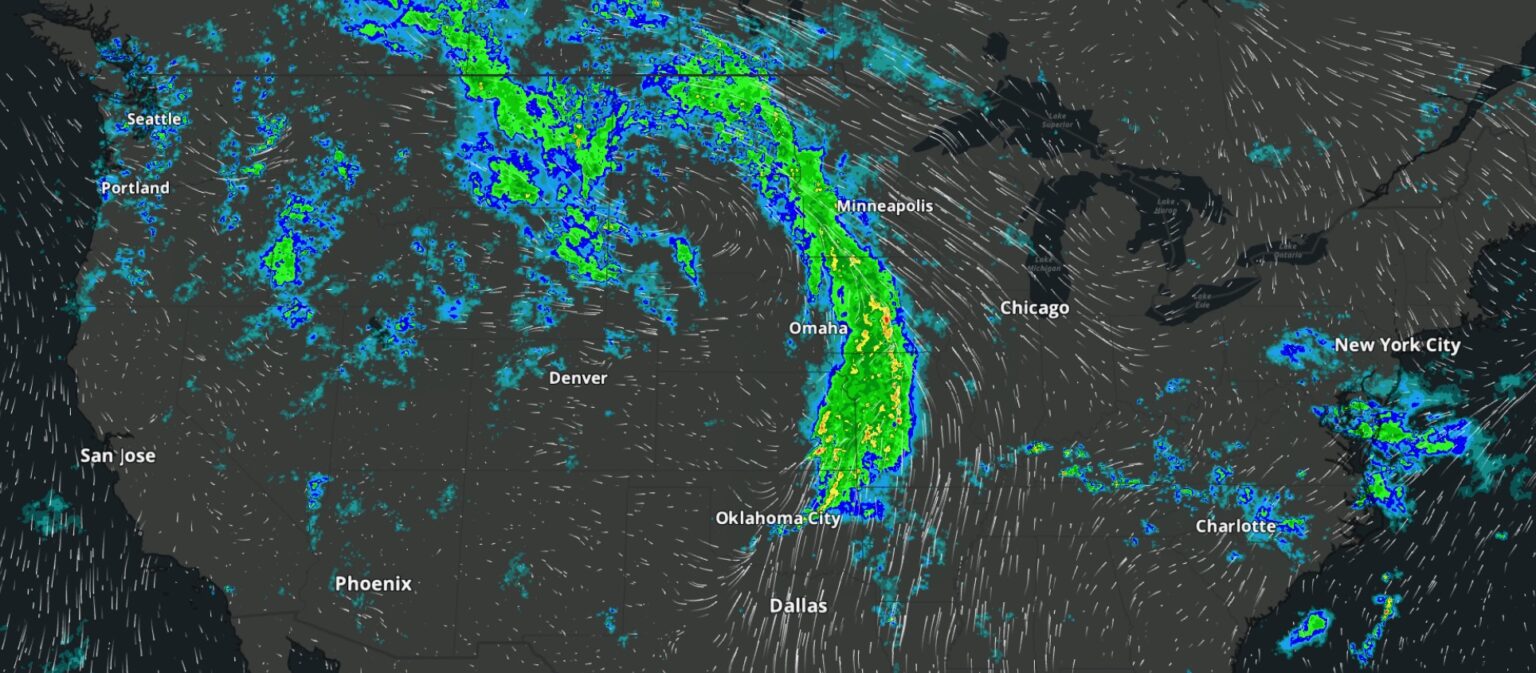NOAA Research Develops An AI-Powered Sibling To Its Flagship Weather Model
HRRR-Cast is NOAA’s first regional experimental AI forecast system
NOAA’s pioneering High Resolution Rapid Refresh short-term weather forecast model, known as the HRRR, will soon be joined by an experimental, AI-powered sibling.

This month, NOAA’s Global Systems Laboratory (GSL) is releasing HRRR-Cast, a data-driven model trained on three years of HRRR model data, for testing by NOAA’s National Weather Service (NWS). The HRRR has been the NWS’s flagship operational short-term forecast model for 10 years.
HRRR-Cast is NOAA’s first regional experimental AI forecast system and a key component of NOAA’s broader Project EAGLE, a long-term project to provide NOAA and the U.S. weather enterprise with the ability to rapidly test, develop and identify the most promising AI models for global to regional ensemble forecasting.
“HRRR-Cast has been shared with colleagues in NOAA’s Environmental Modeling Center for evaluation and potential integration into a demonstration forecast system,” said project manager Isidora Jankov, GSL’s Scientific Computing Branch Chief. “This represents a significant leap forward in the application of artificial intelligence to environmental modeling.”
HRRR-Cast emerged from a collaborative effort within NOAA”s Office of Oceanic and Atmospheric Research led by GSL, which created the HRRR model, a widely used short-term operational weather model. GSL scientists recognized that the enormous volume of high quality data generated by the HRRR would be an ideal training dataset for an AI-powered high-resolution model, and that they could harness AI capabilities to improve the HRRR system. From there, HRRR-Cast was born.
The HRRR is a real-time, numerical weather prediction model that forecasts weather conditions across the continental United States using a 3-kilometer surface grid with 50 vertical elevations. The 3-kilometer resolution allows the HRRR to simulate clouds and convective features that are too small to be resolved by the global models running on a traditional 13-kilometer grid. The HRRR generates a new 18-hour forecast every hour, and a new 48-hour forecast every six hours. The HRRR directly assimilates weather radar data four times per hour, which significantly enhances its ability to forecast precipitation and hazardous weather events like severe thunderstorms and tornadoes.

As a traditional, physics-driven numerical weather model, the HRRR relies on complex mathematical equations and supercomputers to simulate atmospheric processes and predict future weather conditions. Data-driven models like HRRR-Cast, in contrast, “learn” by analyzing vast amounts of similar, historical weather data to identify patterns which they then use to make predictions. HRRR-Cast is lightweight enough to run on a single laptop, unlike the operational HRRR, which requires a supercomputer.
“By leveraging new, high-resolution observations that help us better understand fine-scale physical processes, physical models can be improved, thereby improving the data on which AI-driven models are trained,” Jankov said. She added that her fellow researchers believe that the future of forecasting lies with a hybrid approach using both physical and data-driven models to take advantage of the gains in computational efficiency that AI techniques provide.
HRRR-Cast was initially conceived of as an emulator, developed with a goal of matching the skill of HRRR. Early evaluations are promising, GSL scientists say. Regarding one challenging variable, reflectivity forecasts, HRRR-Cast performs at least as well as the operational HRRR up to seven hours, with comparable performance up to 48 hours. Initial results show that HRRR-Cast also performs comparably to the operational HRRR in forecasting humidity, temperature, and wind, and excels in producing realistic depictions of storm structure.
One big difference: HRRR-Cast is 100 to 1000 times more computationally efficient than the operational HRRR, which allows HRRR-Cast to be run without the need for a supercomputer.
The product of grassroots research in NOAA’s Office of Oceanic and Atmospheric Research (OAR), HRRR-Cast was boosted by support from GSL and the NOAA Office of the Chief Information Officer’s Scientific Engineering and Novel Architecture program. Important contributions have come from scientists in NOAA’s Physical Sciences Laboratory and National Severe Storms Laboratory, the cooperative institutes CIRES and CIRA, and OAR’s Weather Program Office. HRRR-Cast’s integration with Project EAGLE will be done in coordination with the Earth Prediction Innovation Center (EPIC).
The promising early performance of HRRR-Cast serves as a powerful proof of concept, said Curtis Alexander, a weather modeler and the acting GSL Director. HRRR-Cast will likely be expanded to forecast additional meteorological variables, he said. An ensemble version of HRRR-Cast is expected to be available for testing in August.
Source: NOAA Research
